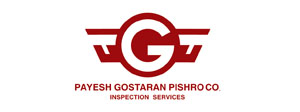
In ultrasonic wall thickness mapping systems a transducer is linked to a computer to record thickness data for predetermined measurement positions. The transducer is scanned, either by a semi or fully automated means, over the surface and thickness readings and exact positions electronically stored. Each thickness level can be color coded and wall thinning by corrosion or erosion is more readily recognized than by manual inspection. High reproducibility (typically with 0.3 mm wall loss) enables accurate monitoring and calculation of corrosion rates.
Wall thickness mapping can be applied in-service at temperatures up to circa 250°C using special high temperature probes and couplant. Wall thinning, pitting, corrosion, flow acceleration corrosion, hydrogen induced corrosion and hot hydrogen attack are detected and imaged.
Applications
Pressure vessels and pressure systems are required to undergo periodic statutory inspection to ensure continued safe and reliable operation. Traditionally this has been achieved by means of an Internal
Visual Inspection (IVI), however there can be a very high cost associated with shutting down a vessel (loss of production), isolating it and preparing it for entry. Corrosion Mapping offers a reliable alternative:
Pressure Vessels & Systems•
Pipework•
Reactors•
Storage Tanks•






